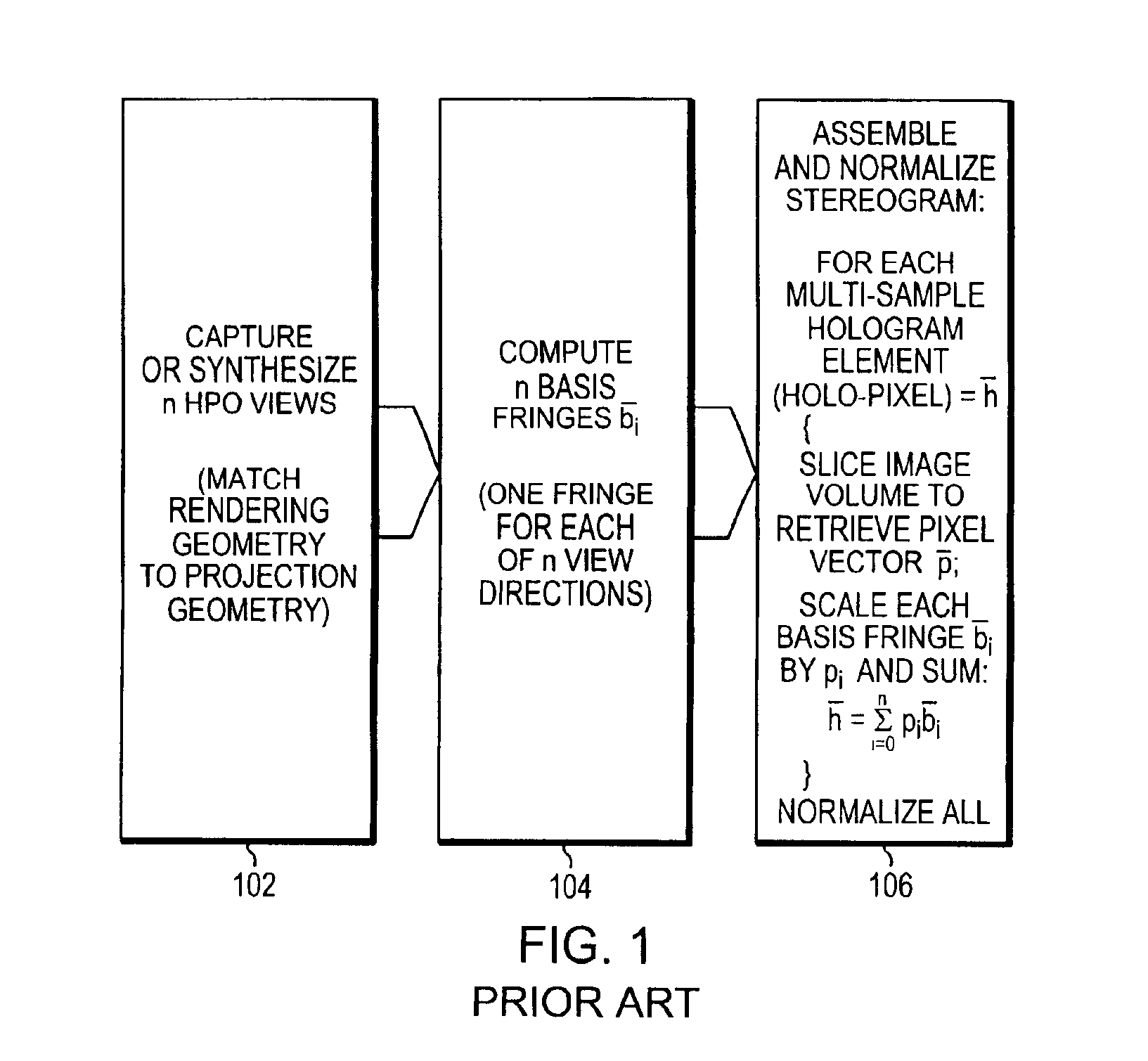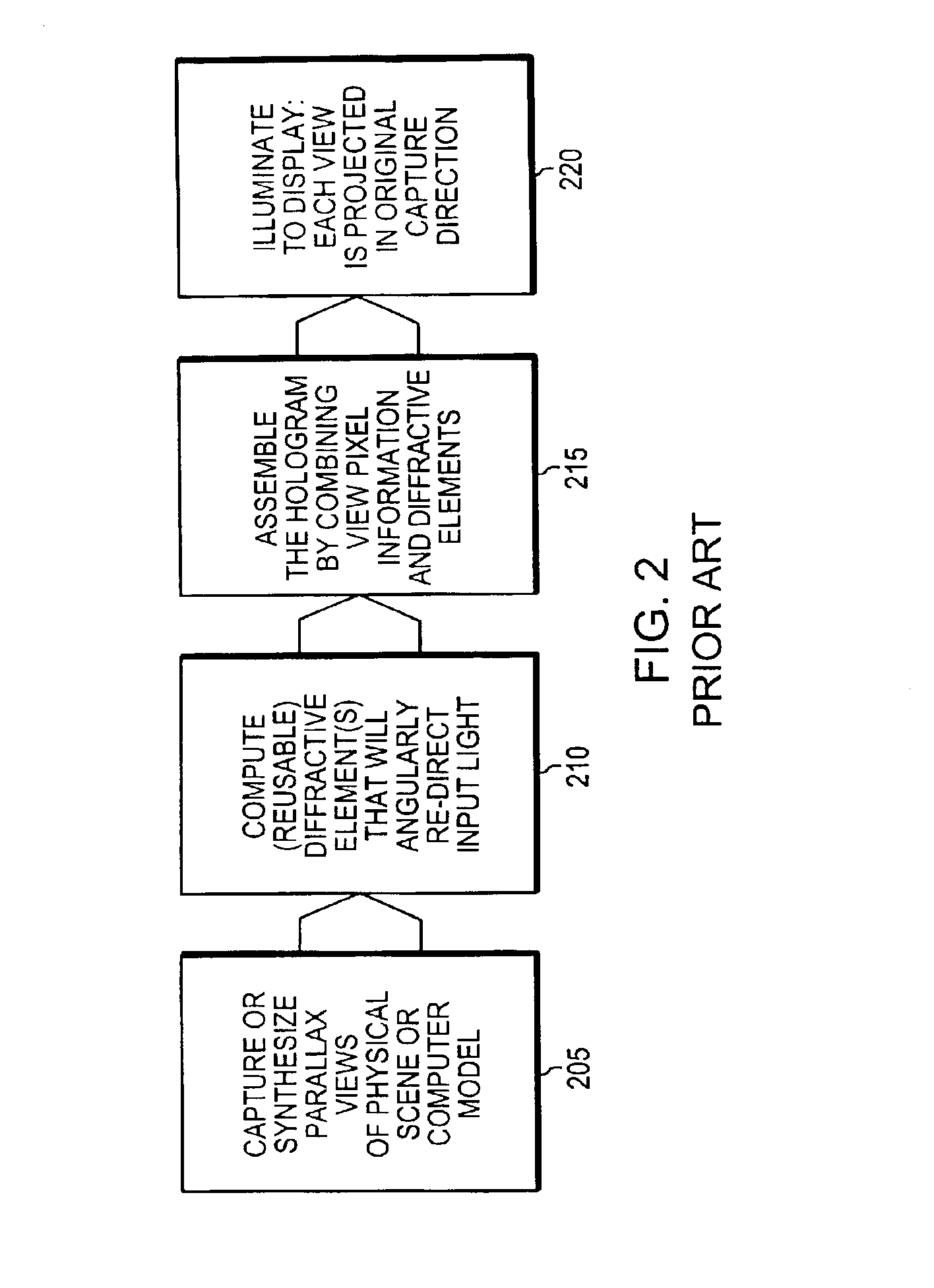Reconfigurable image surface holograms
a holographic and image surface technology, applied in the field of computed holographic stereograms, to achieve the effect of reducing artifacts and minimizing or eliminating such artifacts
- Summary
- Abstract
- Description
- Claims
- Application Information
AI Technical Summary
Benefits of technology
Problems solved by technology
Method used
Image
Examples
Embodiment Construction
[0041]The systems and methods of the invention will be described first in high level overview, in order to familiarize the reader with the features of the invention. Thereafter, the systems and methods will be described in greater technical detail. Some of the advantages and illustrative examples of the systems and methods of the invention will then be given.
[0042]FIG. 2 depicts in generalized form the process of computing and displaying a conventional holographic stereogram. In one embodiment, the systems and methods of the invention involve the operations shown in FIG. 2, each of which may involve discrete steps. A first operation is the capture (or synthesis) of a plurality of two-dimensional images of a three-dimensional object or scene, more generally a three-dimensional target, which is to be depicted holographically, as indicated in box 205. A second operation is the computation of diffractive elemental fringes that angularly redirect input light, as indicated in box 210. A t...
PUM
 Login to View More
Login to View More Abstract
Description
Claims
Application Information
 Login to View More
Login to View More - R&D
- Intellectual Property
- Life Sciences
- Materials
- Tech Scout
- Unparalleled Data Quality
- Higher Quality Content
- 60% Fewer Hallucinations
Browse by: Latest US Patents, China's latest patents, Technical Efficacy Thesaurus, Application Domain, Technology Topic, Popular Technical Reports.
© 2025 PatSnap. All rights reserved.Legal|Privacy policy|Modern Slavery Act Transparency Statement|Sitemap|About US| Contact US: help@patsnap.com



